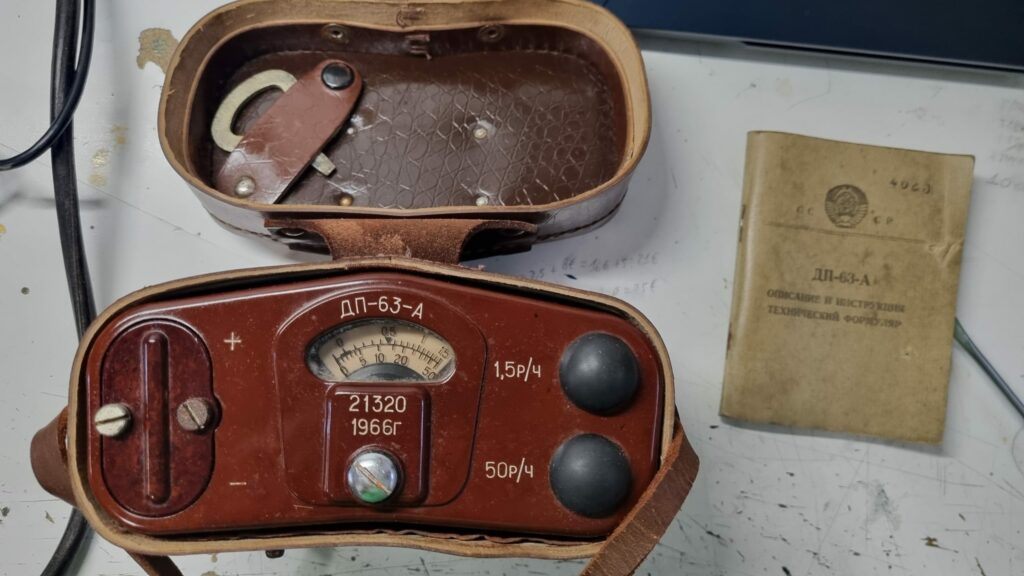
Introduction and Design The DP-63A Geiger counter, developed during the Cold War era, is a radiation detection device specifically designed for high-range measurements. This device was intended for use in environments with potential strong nuclear contamination, reflecting the heightened awareness and preparedness for nuclear accidents or attacks during that period.
Technical Specifications The DP-63A features two distinct measuring ranges: 1.5 R/h and 50 R/h, which cater to different levels of radiation intensity. The design includes two Geiger-Müller tubes, each dedicated to one of these ranges. The presence of a beta window allows the device to measure both beta and gamma radiation, or gamma radiation exclusively, depending on the need.
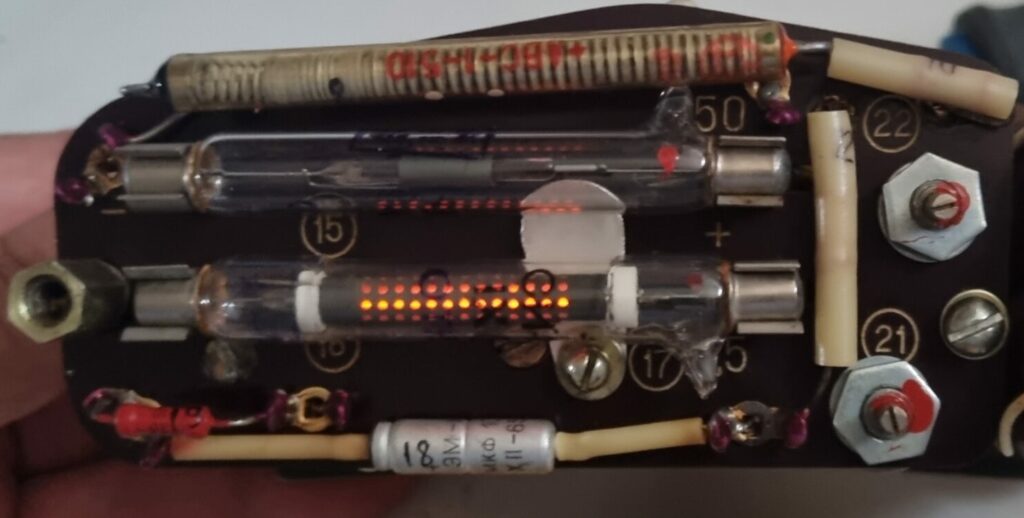
Radium Paint and Safety Modifications Initially, the DP-63A’s scales were coated with radium paint, enhancing visibility in dark conditions by making the scales luminescent. This application of radium paint, while practical for visibility, rendered the device highly radioactive. Production models from 1958 to 1966 featured this radium coating. Recognizing the safety hazards, later models, post-1966, transitioned to using non-radioactive luminous paint to reduce the inherent risks while maintaining some level of low-light visibility.
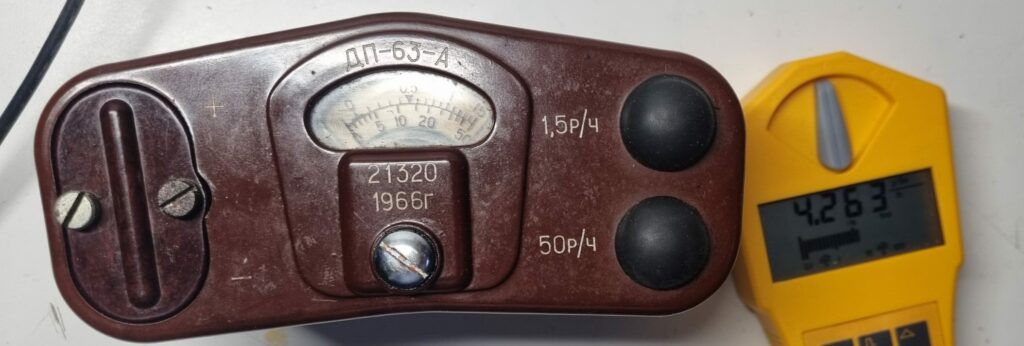
Strontium-90 Source An intriguing aspect of the DP-63A’s design is the inclusion of a Strontium-90 source situated beneath one of the Geiger tubes. This setup was intended to offset the zero calibration of the scales, providing a continuous, relatively low-level radiation source that enhances the sensitivity and accuracy of the lower range measurements.
Legacy and Collectibility The DP-63A’s robust design and historical context make it a significant piece of Cold War-era technology. Collectors and enthusiasts of military and vintage equipment often seek this model, especially units with the original radium paint, due to their rarity and the unique glimpse they offer into the era’s technological and military preparedness.
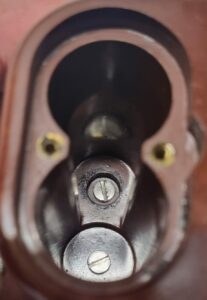
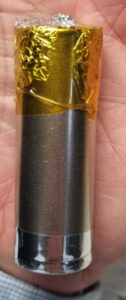
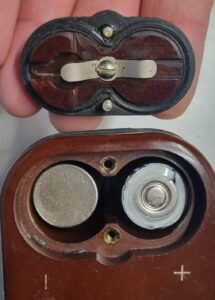
The batteries required to operate the device are no longer available. An easy solution to this problem is to ‘cannibalize’ a 4.5V flat battery and use two of its internal cells. As the pictures show, one cell should be modified by adding an aluminum foil ‘hat’ to enable contact between the positive pole and the receptacle contact screw.
Conclusion The DP-63A Geiger counter exemplifies Soviet engineering during a period of intense focus on radiation detection technology in military field specifically determinated by the Cold War. Its design reflects the dual needs of functionality and safety, adapting over time to incorporate safer materials while maintaining operational integrity in high-stakes environments.